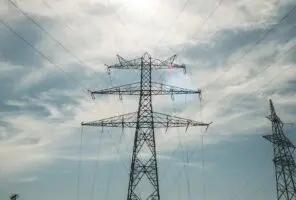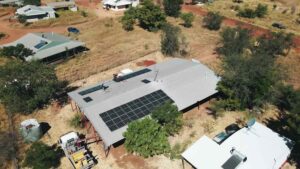Andrew Forrest’s Fortescue Metals says it has produced – manually – the first of its “home-grown” hydrogen electrolysers at its new Gladstone “gigafactory” as it works on a number of different green hydrogen projects in Australia and overseas.
Mark Hutchinson, the CEO of the Fortescue Energy division, says the 1MW PEM electrolysers are currently being produced manually at the new Gladstone factory, which will have a capacity of 2GW a year, and automated production line will begin next month.
The development is significant for Fortescue because it says it will be using its home grown electrolysers as a key part of its bidding into the Australian federal government’s $2 billion Hydrogen Head-start program, that aims to support at least three significant green hydrogen projects in Australia.
Hutchinson told investors in a conference call after the release of the company’s September production report on Thursday at Fortescue will be putting in its application for the hydrogen headstart program in coming weeks.
Hutchinson believes that local production of electrolysers will be a key component of any successful application for the Hydrogen Headstart program, and Fortescue is still working on a number of different project proposals.
The PEM technology that Fortescue is manufacturing is based around technology that emerged from Fortescue Inoix, a US-based company created after the purchase of Xergy Inc and Xergy One in 2022.
Hutchinson says the electrolyser had recently passed quality tests with TUV Rheinland that confirmed its density, durability and efficiency.
Fortescue is also locking in electrolyser supply deals with other manufacturers, including an equity investment and a 1GW off take deal with Electric Hydrogen (EH2), and a 550MW GW supply deal with Plug Power, which had once been touted as a technology partner at Gladstone, for Gibson Island.
“(These deals) do not mean we will not use our own tech for some projects,” Hutchinson said. “We will be keeping them for our head start program which will include our technology.”
Hutchinson said Fortescue had been one of the 29 consortia that bid into South Australia’s $593 million Hydrogen Jobs plan that will see the construction of a 250 MW electrolyser and a 200 MW hydrogen-powered generator near Whyalla.
That tender was won by a consortium involving Atco Australia and BOC Linde. Hutchinson said “there are a lot of other things to do in South Australia.”
Fortescue is working on at least five major green hydrogen projects across the world, and hopes to reach financial approval on most by the end of the year. Its most advanced looks to be Gibson Island in Queensland, where it aims to have 550 MW of electrolyser capacity to make green hydrogen and then green ammonia.
Apart from the Plug Power deal, Fortescue earlier this month signed a major off take deal with Genex Power that will anchor what could be the country’s biggest solar project at Bulli Creek in the south of Queensland. That solar power will be used at Gibson Island.
A string of deals in recent weeks has also seen Fortescue completed the acquisition of the Phoenix Hydrogen Hub in the United States, where phase one proposes an 80MW electrolyser and liquefaction facility.
Hutchinson said the company’s projects would use different electrolyser, depending on the geography and technology needs. Some will use PEM technology and others will use alkaline tech.
“It’s the early stages of the industry,” he said. “I kind of view like the start of the wind or solar industry, where there were some very early technologies and were refined over time, when it got scale, and after a lot of innovation.”
He said the power price is the really important component of green hydrogen projects, along with incentives provided by government schemes such as the IRA in the US, the hydrogen headstart scheme in Australia, and various programs in the EU.
Fortescue is committed to “real” zero emissions from its operations by 2030, which means eliminating fossil fuels from all its operations, including the giant iron ore mines in the Pilbara and substituting with gas and diesel generation, and diesel fuel, with green power.
This includes the use of battery or hydrogen fuelled giant haul trucks – 240 tonnes, and using green ammonia in its trains, and the development of the “infinity train” that will use regenerating batteries and take advantage of the altitude of its mines and transporting the ore to the ports at sea level.
The company also says its first ammonia-powered train had completed a “banking test” of around 100kms, up hill, using ammonia as a substitute for 40 per cent of the diesel normally used.










